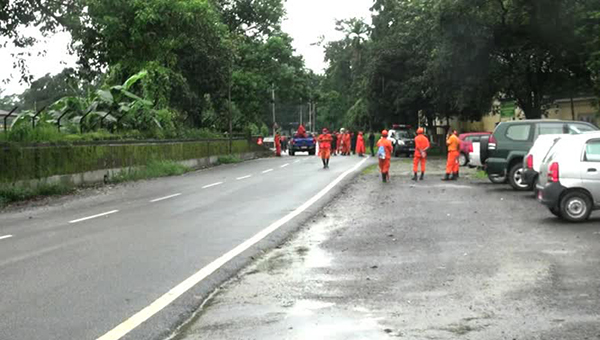 The source of infection of the three frontline workers who tested positive for COVID-19 in Gelegphu is yet to be established. However, the Health Ministry’s Technical Advisory Group (TAG) listed probable sources, which were highlighted in the team’s Inspection and Assessment Report on the Containment Centers of Frontline Workers in Sarpang. The cases were detected on 26th August and 11th September.
The source of infection of the three frontline workers who tested positive for COVID-19 in Gelegphu is yet to be established. However, the Health Ministry’s Technical Advisory Group (TAG) listed probable sources, which were highlighted in the team’s Inspection and Assessment Report on the Containment Centers of Frontline Workers in Sarpang. The cases were detected on 26th August and 11th September.
As per the report presented to the district’s COVID-19 Taskforce last week, the possible sources of infection for the first case are an unintentional breach of safety protocols at the point of entry where the frontline worker was stationed, and illegal entry and interaction with a positive case from across the border.
The patient could also have contracted the virus from a colleague who was asymptomatic and recovered later.
For the other two positive cases, the possible sources are similar. Moreover, there were slim chances of contracting the virus as secondary contacts of the first case.
“The truck is being escorted from the gate till the point of unloading and they just observed until the unloading is completed. Sometimes, there is a risk of breaching the protocol. Maybe the one who is observing that sometimes they may not be there or if they are known to the driver, there are chances of getting contact with the driver and get infected. These are some of the risk areas we have found and probably since we still could not establish the source, we are considering all these points as a possible cause of infection for two cases we have detected,” said Rinxin Jamtsho, a Member of TAG team with the Ministry of Health.
The team, however, ruled out community transmission as all primary and secondary contacts of the positive cases tested negative.
Meanwhile, as part of the inspection and assessment of the containment centres, the TAG team recommended the district’s COVID-19 Taskforce to put in place mechanisms to prevent gathering and intermingling among the different groups of frontline workers.
“Since they are living close to each other and they are working together, they have to live together always. If they get COVID-19 then all of them will get and will have to be quarantined. So that is the risk. If one gets TB, there is a risk to everybody because we cannot afford to have them single room if there are more than 100 of them,” he added.
Ensuring the safety of the frontline workers by providing personal protective equipment, improving the kitchen’s conditions in the containment centres, and encouraging the use of Druk Trace app and hand-washing among others were also mentioned in the report.
The team inspected all 28 containment centres of Sarpang. The move was to ensure the frontline workers carry their responsibilities in a safe environment with adequate access to basic requirements.
Karma Wangdi












